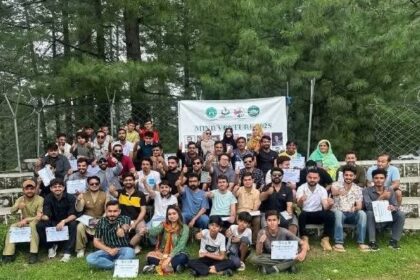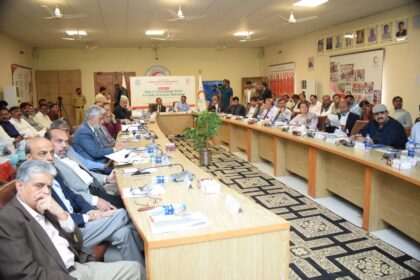Pakistan has introduced a comprehensive three-tier climate resilience strategy as authorities prepare for a monsoon season that the NDMA now expects to be 22 to 26 percent more intense in 2026. The plan, unveiled jointly by Minister for Climate Change Senator Musadik Masood Malik and NDMA Chairman Lieutenant General Inam Haider Malik after approval by the Prime Minister, emphasises early action to protect vulnerable communities and critical infrastructure.
The first phase focuses on immediate repairs and preparedness over the next 200 to 250 days, including restoration of embankments, floodgates, levees and drainage systems. The government has directed the establishment of temporary school systems and deployment of mobile healthcare units to prevent the kind of educational and medical disruption seen after previous floods.
The second phase spans one to three years and aims to expand urban drainage networks and other existing infrastructure. Over the following three to five years, the third phase will prioritise long-term resilient construction such as river training projects designed to control flows, protect settlements and restore natural river paths. Together, these stages form the backbone of Pakistan’s climate resilience approach.
Minister Musadik Malik urged a shift in political priorities toward people affected by climate disasters, noting that recent floods caused economic losses exceeding 9 percent of GDP and that between 4,570 and 4,600 lives were lost in recent events. He said four major floods have displaced nearly 40 million people overall, including 3.1 million in the most recent disaster, and that roughly 120 million school days were lost for about two million children. He described these victims as martyrs of a national tragedy and called for their hardships to shape the national narrative.
Decentralisation of Early Warning Systems is a central element of the strategy. Warnings will be relayed directly to tehsil and district administration offices, and newly installed screens will make deputy commissioners and assistant commissioners the first responders. Local communities will be trained to evacuate safely within the critical 60 to 90 minutes after an alert, reducing loss of life and enabling faster, more localised action.
NDMA Chairman Lieutenant General Inam Haider Malik provided a technical briefing, highlighting that glacier melt is increasing by 2 to 3 percent annually and that the number of high-risk glacial lake outburst flood sites has risen to more than 50. He noted that the National Emergency Operations Center now uses over 370 satellite feeds and more than 10,000 digital climate layers to produce six to eight month projections, a capability he said compares favourably with many advanced countries.
On illegal construction, the Prime Minister has ordered the demolition of unauthorised hotels and resorts built inside river corridors in areas including Gilgit Baltistan, and officials who allowed such zoning violations will be held accountable. The government plans coordinated action with provincial authorities to prevent future encroachments on river channels and floodplains.
Financing for the resilience plan will draw from domestic Annual Development Plans, a $2 billion climate allocation under the IMF programme and a long-term $20 billion resilience plan developed with the World Bank. Officials stress that implementation, not funding, is the principal challenge, and have set a strict oversight regime with quarterly reviews by the Prime Minister, monthly meetings of a ministerial committee and weekly implementation team sessions.
The strategy was developed through consultations with federal and provincial stakeholders and will be rolled out with regular media engagement to ensure transparency and accountability. With a strengthened early warning architecture, targeted short-term repairs and a multi-year build-out of resilient infrastructure, Pakistan intends to reduce the human and economic toll of future floods and better protect communities ahead of the projected stronger monsoon.











